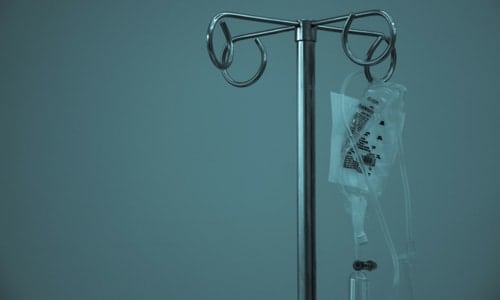Last updated on March 7th, 2024 at 11:20 am
Believe it or not, I did not really think about giving birth until I was already several months into my first pregnancy with my singleton. With all the excitement and nervousness and fear of the unknown regarding pregnancy itself, I had not really taken the time to think about the fact that pregnancy ends in childbirth. I remember the moment when I actually really considered the fact that one way or another, this baby was going to have to come out of my body…and panicked. Childbirth can be a scary event looming on the horizon of one’s future, mostly because of the fear of the pain that is often associated with giving birth. And no doubt, labor can be painful and hard, but it can also be beautiful and empowering. Thankfully, fear of pain does not have to be overwhelming when facing childbirth – rest assured that there are plenty of safe, effective pain relief options available to women in labor today.
I’ve joked that I’ve experienced ALL the different types of labor. Having gone through childbirth five times, I’ve had my share of diverse experiences — from a completely unmedicated delivery to an emergency c-section in which I was put to sleep, and everything in between. And while I would have liked for some of my deliveries to have been calmer, more peaceful, and definitely less painful, I’m thankful for the knowledge my various experiences have given me and, mostly, for the appreciation of the fact that there is no right or wrong way to give birth. While it is great to have a plan and ideal circumstances, remember to stay open and flexible, knowing that plans can quickly change in childbirth. The ultimate goal is for mom and babies to both be healthy and well at the outset.

Relief from pain can come in medical and non-medical forms. Some mothers prefer to keep their labor and delivery as natural and unmedicated as possible, while others are comforted by the knowledge that they plan on opting for pain relief as soon as they are able. Non-medical pain relief methods are often free, harmless, and many can be used by mothers having both medicated and unmedicated labors to help ease discomfort. Here are some pain relief options for moms in labor:
Twiniversity Tip: Talk to your doctor about which of these methods are options for your twin delivery. With twins, hospitals want to closely monitor the babies, causing some of these options to be off the table. Check what your particular hospital will allow and/or offer.
Non-medical
1. Focused Breathing and Relaxation
Methods of childbirth such as The Bradley Method and Lamaze teach the laboring mother how to breathe deeply in a way that helps her to relax, alleviating some of the tension and pain in her body. The Bradley Method, a method I have used and had great results from, also uses mental imagery and intentional whole body relaxation which can help the mother release tension and work with her contractions instead of fighting against them.

2. Water
Being in water can also be extremely helpful in naturally relieving pain during childbirth. Warm water from a showerhead can produce a counter pressure that helps with a backache and contraction pain. Additionally, soaking in a warm bath or inflatable birthing pool can help alleviate pressure and has been said to be extremely effective in relieving pain naturally in childbirth.
3. Birthing Props
Other props such as a birthing ball or squat bar can help a laboring mom get into a position that is more comfortable while working with gravity in an upright position to help bring the baby down.
4. Massage
Often times massaging the lower back can help with back labor and pain in this area. Two of my labors were continuous back labor, and a hard massage on my lower back provided counter pressure that made the pain more bearable.

5. Music
Often listening to music, especially songs that are meaningful to you can help get your mind off the pain. While not all hospitals and scenarios will allow for music to be played (my plan to listen to music went out the window when I had to be rushed to an emergency c-section), having a soundtrack on hand can be a good resource to help pass the time and relax.
Medical
It is essential in childbirth to understand that plans can quickly change in labor and that some factors are beyond our control. I was pretty sure I was going to have an epidural with my firstborn. I didn’t know how I’d handle the pain, plus everyone I knew with a child opted for an epidural. However, when the anesthesiologist first came around to do my epidural, my pain was not terribly severe and I sent him away, not ready for pain relief yet. Truthfully, I was more afraid of getting an epidural than of the pain of contractions. I later called him back when the pain had become more intense and was glad to accept the epidural at that time. Whatever your plan is, there are several options for medical forms of pain relief during childbirth.
1. Epidural
An epidural is a common form of pain relief where the laboring mother is given an injection of numbing medication in her lower back, which numbs her body from the waist down. A small catheter is usually placed in her lower back to continue administering the medicine as she needs it. An epidural is a common and extremely effective method of pain relief.

2. Narcotic Pain Relief
This is generally given via a shot or in the mother’s IV. It can include medicines such as morphine, Nubain, and Stadol, and while this medication does not numb a mother to the pain as an epidural would, it can significantly reduce her experience of pain during labor. One thing to keep in mind when opting for this form of pain relief is that it can make the mother groggy and, if given too late in labor, can cause the baby to be born groggy as well. It’s a good option if the mother has had a slowly progressing labor and is in need of some rest, or would like to avoid being numbed but needs some relief from her pain.
3. Nitrous Oxide
Also known as “laughing gas”, nitrous oxide is administered through a mask that the laboring mom places over her face as she inhales the substance. While this form of pain relief isn’t as strong as an epidural or narcotic medicine, it can help take the edge off and relieve some anxiety.
Talk with your doctor at length about all of these options to find out which ones are right for you. Ask the following questions:
- What’s involved in the method?
- How will it affect me? Will I be able to walk, or will I be confined to bed?
- How will it affect my babies?
- What are the possible side effects?
- How quickly will it work? How long will the pain relief last?
- Can I combine it with other methods of pain relief?
- When during labor is the method available?
- What if it doesn’t work?
- Will I remember everything?
- Will it increase the duration of my labor?
- Will I be able to breastfeed my babies after delivery?

Every labor is different and every person is different. With the knowledge of your options in labor, you’ll be able to make the best decision for you and your babies when the time comes. Whether you opt for pain relief as soon as you enter the hospital, or push through to the end without any medication, you alone are the warrior who carried your babies for the duration of your pregnancy and will bring them into this world. You’ve got this, mama.
All content on this Website, including medical opinion and any other health-related information, is for informational purposes only and should not be considered to be a specific diagnosis or treatment plan for any individual situation. Use of this site and the information contained herein does not create a doctor-patient relationship. Always seek the direct advice of your own doctor in connection with any questions or issues you may have regarding your own health or the health of others.

Natalie Downey is a stay at home mom to six rambunctious but lovable kids. Her two year old boy/girl twins were the surprise of her life and keep her on her toes. She gets by with lots of help from coffee and yoga and enjoys literature, spontaneous dance parties with her kids, and playing guitar.







